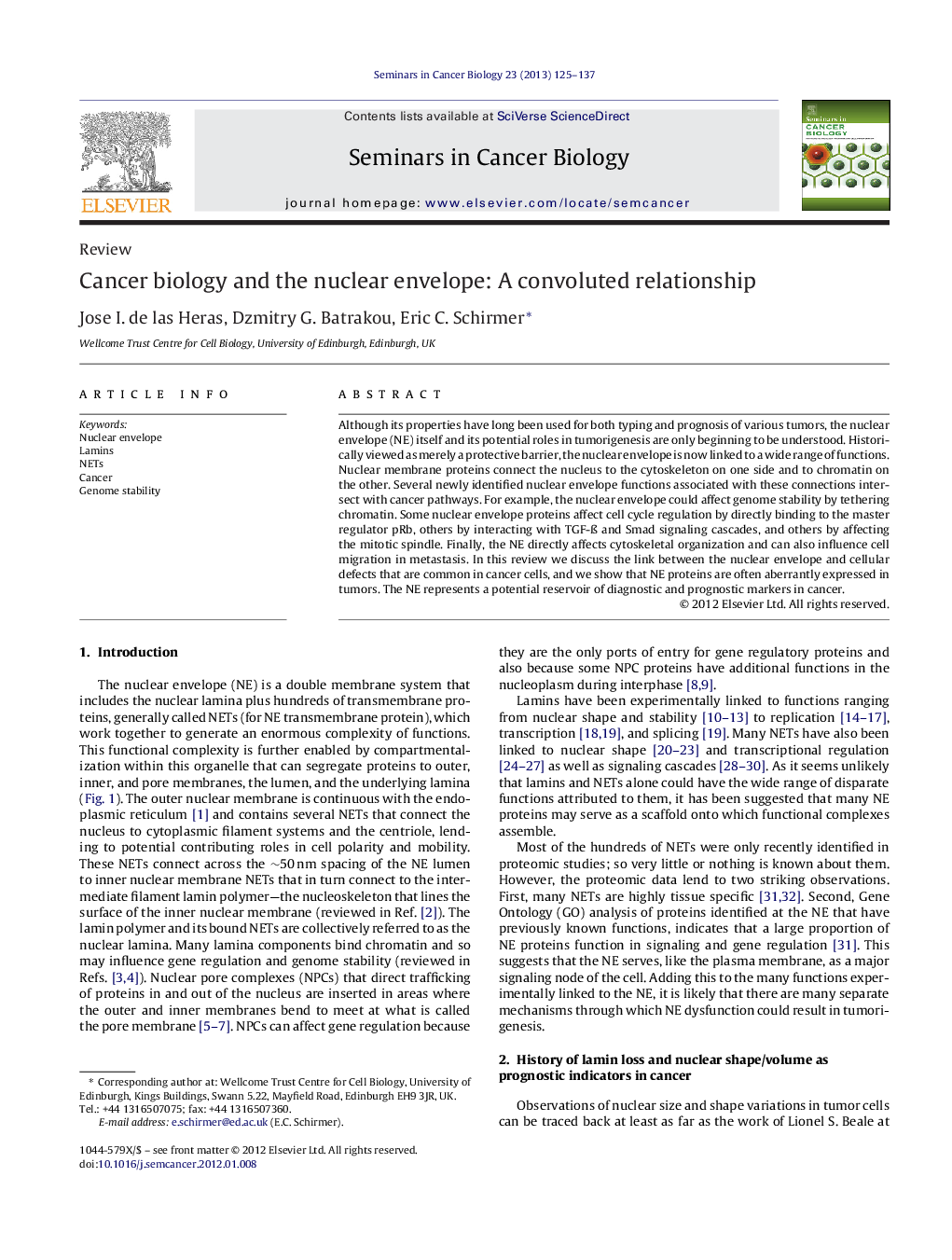| Article ID | Journal | Published Year | Pages | File Type |
|---|---|---|---|---|
| 2023707 | Seminars in Cancer Biology | 2013 | 13 Pages |
Although its properties have long been used for both typing and prognosis of various tumors, the nuclear envelope (NE) itself and its potential roles in tumorigenesis are only beginning to be understood. Historically viewed as merely a protective barrier, the nuclear envelope is now linked to a wide range of functions. Nuclear membrane proteins connect the nucleus to the cytoskeleton on one side and to chromatin on the other. Several newly identified nuclear envelope functions associated with these connections intersect with cancer pathways. For example, the nuclear envelope could affect genome stability by tethering chromatin. Some nuclear envelope proteins affect cell cycle regulation by directly binding to the master regulator pRb, others by interacting with TGF-ß and Smad signaling cascades, and others by affecting the mitotic spindle. Finally, the NE directly affects cytoskeletal organization and can also influence cell migration in metastasis. In this review we discuss the link between the nuclear envelope and cellular defects that are common in cancer cells, and we show that NE proteins are often aberrantly expressed in tumors. The NE represents a potential reservoir of diagnostic and prognostic markers in cancer.
